
Central police station in Hong Kong by Herzog & de Meuron
The CPS project is supported by The Hong Kong Jockey Club Charities Trust and is intended to transform a collection of historically significant buildings into a centre of heritage, arts and leisure facilities for the local community and overseas visitors.
Conserving the historic buildings at CPS is a priority so that the site could eventually be made publicly accessible and in the process, becomes an attractive gathering place for the community. Establishing a centre for heritage, arts and leisure at this prime Central location complements the overall development of arts and culture in the city and adds an attraction with distinct Hong Kong character.
To fully understand the views of the community on the CPS, the Club conducted an extensive six month public consultation from October 2007 to April 2008. In 2008, the HKSAR Executive Council confirmed the Club’s not-for-profit concept to revitalise the CPS. The Government and the Club then entered into a partnership to take forward the conservation and revitalisation of the Central Police Station project.
Concept Plan
The CPS design plan is a collaborative effort by an internationally recognised team of experts including Herzog & de Meuron, Purcell Miller Tritton and Rocco Design Architects Limited.
The synergy of new and conserved heritage buildings, together with publicly accessible outdoor spaces, offer broad civic appeal and provide intimate, multi-purpose venues for visual and performing arts activities.
The site would be directly connected to the surrounding neighbourhood and is intended to become a gathering place with diverse community, leisure and cultural elements.
The Design
The heritage-led design approach researches original details and where appropriate, keeps them consistent throughout the site. Sixteen historically significant buildings, including F Hall, would be retained. The floor area of the new structures comprise about one-fifth of the site’s total gross floor area.
The buildings at the site, including the two new structures, offer a contrast to the city’s surrounding skyscrapers. The heights of Old Bailey Wing and Arbuthnot Wing, at 25 metres above the prison yard, would fully comply with the height guideline of 80 mPD gazetted in the May 2010 Outline Zoning Plan.
Connectivity to the City
The site would be made more accessible to the public via several entrances so as to be more connected to the surrounding neighbourhood such as Lan Kwai Fong, SoHo and other Central points. In addition to the existing public entrance at Pottinger Gate, an Old Bailey Gate, an Arbuthnot Gate and a footbridge connection to the Mid-levels Escalator are planned to open up what was previously a secure compound, for easy access and enjoyment by the public. Stairs and lifts would be provided to facilitate pedestrian connectivity between the upper courtyard near Chancery Lane and lower courtyard near Hollywood Road, and between SoHo and Lan Kwai Fong.
Community Focused
The design plan takes into account the nature of existing features and proposes adapting them into spaces that encourage community participation. 37% of the construction floor area would be for arts and culture, 36% would be for public use and plant space while 27% has been allocated for commercial use. The prison yard and the police parade ground would also be preserved, respectively, as the upper and lower courtyards, and together with other additional open space, the total area of major open spaces at the site is over 4,000 square meters.
Conserving the historic buildings at CPS is a priority so that the site could eventually be made publicly accessible and in the process, becomes an attractive gathering place for the community. Establishing a centre for heritage, arts and leisure at this prime Central location complements the overall development of arts and culture in the city and adds an attraction with distinct Hong Kong character.
To fully understand the views of the community on the CPS, the Club conducted an extensive six month public consultation from October 2007 to April 2008. In 2008, the HKSAR Executive Council confirmed the Club’s not-for-profit concept to revitalise the CPS. The Government and the Club then entered into a partnership to take forward the conservation and revitalisation of the Central Police Station project.
Concept Plan
The CPS design plan is a collaborative effort by an internationally recognised team of experts including Herzog & de Meuron, Purcell Miller Tritton and Rocco Design Architects Limited.
The synergy of new and conserved heritage buildings, together with publicly accessible outdoor spaces, offer broad civic appeal and provide intimate, multi-purpose venues for visual and performing arts activities.
The site would be directly connected to the surrounding neighbourhood and is intended to become a gathering place with diverse community, leisure and cultural elements.
The Design
The heritage-led design approach researches original details and where appropriate, keeps them consistent throughout the site. Sixteen historically significant buildings, including F Hall, would be retained. The floor area of the new structures comprise about one-fifth of the site’s total gross floor area.
The buildings at the site, including the two new structures, offer a contrast to the city’s surrounding skyscrapers. The heights of Old Bailey Wing and Arbuthnot Wing, at 25 metres above the prison yard, would fully comply with the height guideline of 80 mPD gazetted in the May 2010 Outline Zoning Plan.
Connectivity to the City
The site would be made more accessible to the public via several entrances so as to be more connected to the surrounding neighbourhood such as Lan Kwai Fong, SoHo and other Central points. In addition to the existing public entrance at Pottinger Gate, an Old Bailey Gate, an Arbuthnot Gate and a footbridge connection to the Mid-levels Escalator are planned to open up what was previously a secure compound, for easy access and enjoyment by the public. Stairs and lifts would be provided to facilitate pedestrian connectivity between the upper courtyard near Chancery Lane and lower courtyard near Hollywood Road, and between SoHo and Lan Kwai Fong.
Community Focused
The design plan takes into account the nature of existing features and proposes adapting them into spaces that encourage community participation. 37% of the construction floor area would be for arts and culture, 36% would be for public use and plant space while 27% has been allocated for commercial use. The prison yard and the police parade ground would also be preserved, respectively, as the upper and lower courtyards, and together with other additional open space, the total area of major open spaces at the site is over 4,000 square meters.
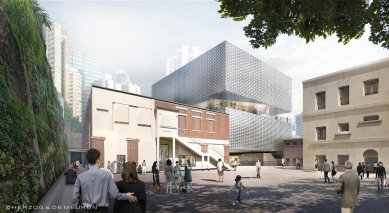
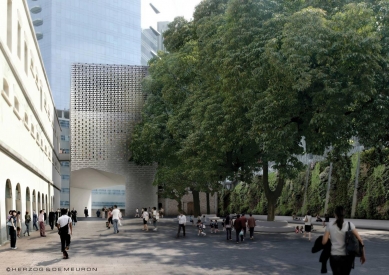
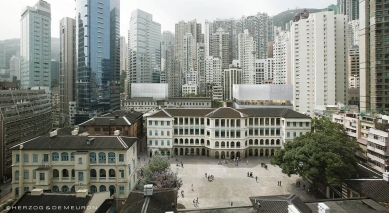
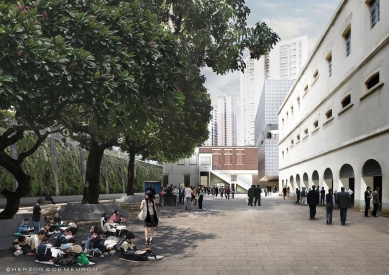
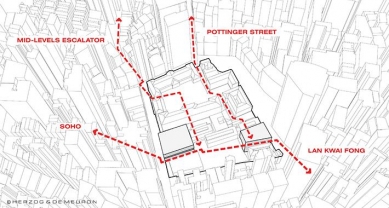
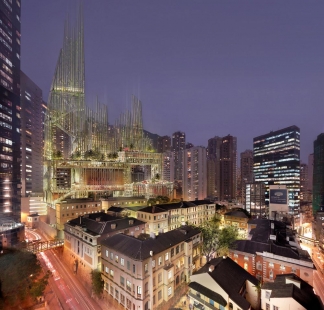
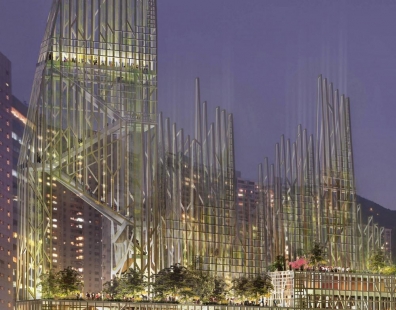
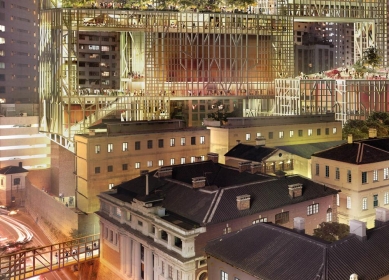
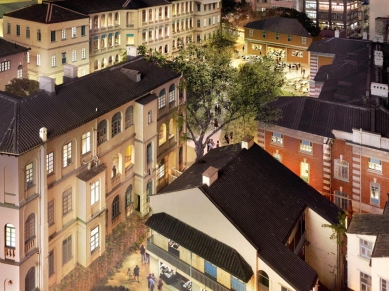
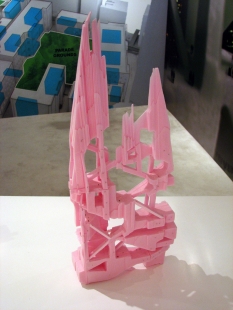
0 comments
add comment











